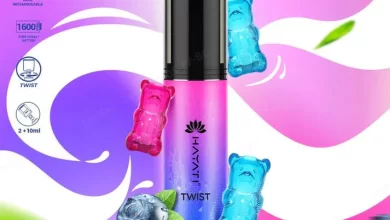Marine Window Tinting | Enhancing Comfort and Protection on the Water
Marine Window Tinting
Marine window tinting is becoming an essential consideration for boat owners and enthusiasts. Whether you own a yacht, fishing boat, or sailboat, the benefits of window tinting can significantly enhance your on-water experience. This article will explore the various aspects of marine window tinting, including its advantages, types of tints available, installation process, and maintenance tips.
Understanding Marine Window Tinting
Marine window tinting involves applying a thin film to the windows of boats and yachts to reduce glare, improve privacy, and enhance overall aesthetics. This process not only provides visual appeal but also plays a crucial role in protecting both passengers and the interior of the vessel from harmful UV rays and excessive heat.
Advantages of Marine Window Tinting
UV Protection
One of the primary reasons for installing window tinting on marine vessels is to protect against harmful UV rays. Prolonged exposure to UV radiation can cause skin damage, including sunburn and long-term issues like skin cancer. Marine window tinting can block up to 99% of UV rays, providing passengers with a safer environment while enjoying their time on the water.
Heat Reduction
In addition to UV protection, window tinting significantly reduces heat inside the vessel. Direct sunlight can raise the internal temperature of a boat, making it uncomfortable for passengers and crew. By reflecting and absorbing heat, tinted windows help maintain a cooler interior, leading to a more enjoyable experience, especially during hot summer days.
Glare Reduction
Glare from the sun can impair visibility, making navigation difficult and potentially dangerous. Marine window tinting minimizes glare, providing clearer views of the surroundings and enhancing safety. This is especially important for operators who need to maintain focus while navigating through busy waterways.
Increased Privacy
Automotive window tinting provides an added layer of privacy for boat owners and their guests. Whether you’re anchored in a busy harbor or cruising through calm waters, window tinting prevents outsiders from easily peering into the vessel. This added privacy allows passengers to relax without feeling exposed to onlookers.
Enhanced Aesthetics
Marine window tinting can also enhance the overall appearance of a boat. With various tint shades and styles available, boat owners can choose a look that complements their vessel’s design. This aesthetic improvement can increase the boat’s resale value and make it more appealing to potential buyers.
Protection of Interior Furnishings
The sun’s rays can cause significant damage to a boat’s interior furnishings, including upholstery, wood finishes, and electronics. Over time, UV exposure can lead to fading and deterioration. By installing tinted windows, boat owners can protect their investments and extend the life of their interior features.
Types of Marine Window Tinting Films
When considering marine window tinting, it’s essential to understand the various types of films available:
Dyed Window Film
Dyed window film consists of a layer of dye that absorbs heat and reduces glare. This type of tint is popular for its affordability and ability to block UV rays. However, it may not offer as much heat rejection as other types.
Metalized Window Film
Metalized window films contain tiny metallic particles that reflect sunlight and heat away from the boat. This type of tint offers superior heat rejection and glare reduction while providing some privacy. However, it may interfere with electronic devices like GPS and radio signals.
Ceramic Window Film
Ceramic window films are made from advanced technology that incorporates ceramic particles. This type of tint provides excellent heat rejection, UV protection, and glare reduction without interfering with electronic signals. Although more expensive than dyed or metalized films, ceramic films are highly effective and durable.
Safety and Security Film
Safety and security films are designed to hold shattered glass together, reducing the risk of injury during an accident. This type of film is often thicker and can provide additional UV protection and heat reduction, making it a popular choice for boat owners concerned about safety.
The Installation Process
Installing marine window tinting requires careful consideration and expertise to ensure optimal results. Here’s a brief overview of the installation process:
Preparation
Before installation, the windows must be thoroughly cleaned to remove dirt, dust, and any residues that could interfere with adhesion. This step is crucial for achieving a smooth, bubble-free finish.
Measuring and Cutting
The tint film is measured and cut to fit each window accurately. Professional installers typically use templates to ensure precision and minimize waste.
Application
The tint film is applied to the interior of the windows using a special adhesive. Installers carefully position the film to avoid wrinkles and bubbles. This step may involve using a heat gun to help the film conform to the curves of the glass.
Trimming and Finishing
Once the film is applied, any excess material is trimmed to ensure a clean, professional look. The edges are then sealed to prevent lifting or peeling over time.
Curing
After installation, the film may require some time to cure. It’s essential to follow the manufacturer’s guidelines for curing times to ensure the film adheres properly.
Maintenance Tips for Marine Window Tinting
Proper maintenance can significantly extend the life of your marine window tinting. Here are some tips to keep your tinted windows looking their best:
Avoid Harsh Cleaners
Use gentle, non-abrasive cleaners to clean tinted windows. Harsh chemicals and abrasive materials can damage the film and cause it to peel or fade.
Use a Soft Cloth
When cleaning, opt for a soft microfiber cloth to avoid scratching the film. Avoid using paper towels, as they can be rough and may scratch the surface.
Regular Inspections
Regularly inspect the tinted windows for any signs of peeling, bubbling, or damage. Addressing these issues early can prevent further damage and maintain the appearance of your boat.
Avoid Excessive Heat
While marine window tinting helps reduce heat, avoid exposing your boat to excessive heat or direct sunlight for extended periods. This can help preserve the integrity of the film.
Professional Assistance
If you notice significant damage or wear to your window tinting, consider seeking professional assistance for repairs or replacements. Attempting to fix these issues yourself can lead to further damage.
Conclusion
Marine window tinting is an invaluable addition to any boat, offering a multitude of benefits ranging from UV protection and heat reduction to enhanced aesthetics and privacy. By understanding the types of tints available and following proper installation and maintenance practices, boat owners can ensure their vessels remain comfortable and stylish for years to come. Whether you’re an avid sailor or a weekend cruiser, investing in marine window tinting can significantly enhance your time on the water, allowing you to enjoy your maritime adventures to the fullest.


